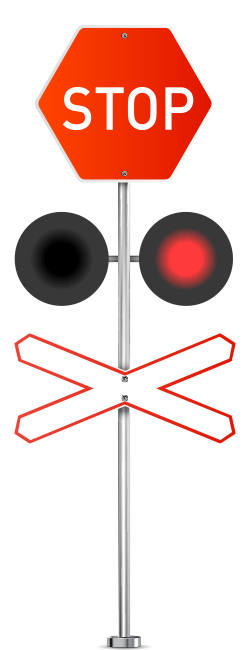Safety is an initiative that ties up with the national strategy to mitigate the risk of incidents that include public injuries and fatalities as a consequence of railway operations. The objectives of the campaigns are to demonstrate that taking risks at level crossings is dangerous and can be fatal if traffic rules and safety messages are not abided by. TransNamib has observed with serious concern that significant train accidents continue to occur on our rail network especially at level crossings, which has highlighted specific issues that need our prompt attention.
The railway line runs through towns, farms and communities without any barricades on its sides that would hinder humans and animals from crossing the line anywhere they may wish. This poses risk of rail accidents
The company has erected rail traffic signs for the train driver to operate the trains safely. Before each level crossing about 150 meters whistles boards are erected. This is to warn motorists as well as the pedestrians that there is an oncoming train in the section is about to cross that particular level crossing. The whistle is always blown ± 150 meter before the train approaching the level crossing. The train drivers are trained safety operating procedures and it is compulsory to be in-force by train drivers to warn any obstruction on the railway line to refrain from being on the railway line. This is done to avoid any collision. The train can’t stop immediately due to the freight as the train brakes are applied gradually to avoid derailment and possible capsizing.

Do not enter a level crossing if red lights are flashing. Only cross if you are sure there is no oncoming train
Slow down and stop; look left and right before crossing
Don’t use rail tracks as shortcuts-always cross at level crossing
Always obey all the warning signs
Never park your vehicle at the level crossing. The vehicle must be at least 5 meters away from the line
Road users should always expect a train at a level crossing, never take things for granted
Always reduce the volume of your radio when approaching the level crossing
Remember that the train always have the right-of-way at all level crossings
• Keep your animals away from the railway line
• Don’t let the animals graze next to the railway line
• Keep a close watch on your animals during the day
• Animals must be kept inside the kraal at night
• Do not damage the railway property such as fence, bridges, signals and tracks
• The Railway is a state property do not vandalize it
• Stealing is an offense; do not steal
• Report any crime on the railway to your nearest police or community leaders or call the Emergency toll-free number: 0800298100
• Stay away from the railway line
• Do not put stones or any objects on the railway line
• Do not sit or sleep on the railway line
• Do not throw stones at the moving train
• Stand away from the railway line and never use cell phone or earphone near the railway line
• Do not hold parties or picnics next to railway line
• Do not climb on the open wagon nor try to race after the train
• Don’t cross under the railway bridge but cross over the bridge
Railway Safety Regulator
Safety Management System
TransNamib’s rail safety management system is governed by the Rail Safety Authority which regulates train operations in Namibia. The system is obliged to ensure compliance with the following legislation:
- National Transport Services Act, 1998 (28 of 1998)
- Labour Act 2009 (no 11 of 2009)
- Petroleum Products and Energy Act, 1990 (13 of 1990)
- Explosive Act 1956 (26 of 1956)
- National Railway Regulatory Act of the RSA (16 of 2002) regarding cross-border operations in conjunction with Transnet.
- SARA Standard; TransNamib Rules and Regulations Rail Safety Authority Policy Road Traffic Act.

